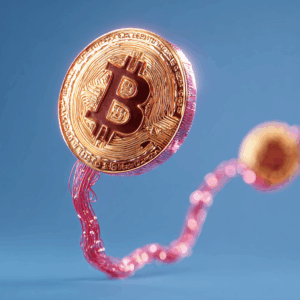The U.S. Securities and Exchange Commission (SEC) recently approved the first batch of spot Ethereum (ETH) ETFs, marking a significant milestone in the world of cryptocurrency investments. This approval has the potential to make waves in financial markets, similar to the impact of spot Bitcoin ETFs which became the fastest growing ETFs in history, as noted by BlackRock CEO Larry Fink.
Direct Exposure to Ethereum Without Ownership
These newly approved spot Ethereum ETFs enable investors to access Ethereum directly, the second-largest cryptocurrency by market capitalization, without the need to buy and store the digital asset themselves. This development opens up new opportunities for investors looking to diversify their portfolios with exposure to the growing cryptocurrency market.
Approval Process and Regulatory Changes
However, the approval of these ETFs does not mean immediate trading availability. It is an initial 19b-4 approval, with further steps required, including approval on the S-1 documents, which could take some time to complete. Bloomberg ETF analyst James Seyffart anticipates a waiting period of a few weeks, with more updates expected in the coming days.
Bloomberg analysts Eric Balchunas and James Seyffart surprised many when they raised the approval odds for the Ethereum ETFs from 25% to 75%, signaling a potential shift in the SEC's stance on the matter. This change in sentiment underscores the evolving nature of cryptocurrency regulations and the complexities involved in categorizing assets like Ethereum.
Regulatory Framework and Congressional Actions
The debate over whether Ethereum should be classified as a security or a commodity has been ongoing. Recent regulatory developments, including the approval of Ethereum ETFs and the passage of the Financial Innovation and Technology Act 21 (FIT 21) in the House, indicate a move towards regulating ETH as a commodity.
If FIT 21 is passed by the Senate and signed into law by President Biden, Ethereum could fall under the classification of a commodity based on the new guidelines outlined in the bill. This legislative progress reflects efforts to provide clarity and establish a legal framework for digital assets, addressing the regulatory uncertainty that has persisted in the cryptocurrency space.
Congress's focus on crypto-related legislation, as highlighted by U.S. Senator Cynthia Lummis, signals a growing recognition of the importance of digital assets in the financial landscape. The potential reclassification of Ethereum and the broader regulatory framework set forth by FIT 21 could shape the future of cryptocurrency markets and investor participation.
Frequently Asked Questions
How much do gold IRA fees cost?
The Individual Retirement Account (IRA), fee is $6 per monthly. This fee covers account maintenance fees, as well any investment costs that may be associated with your investments.
If you wish to diversify your portfolio, you may need to pay additional fees. The fees you pay will vary depending on the type of IRA that you choose. Some companies offer checking accounts for free, while others charge monthly fees for IRA account.
In addition, most providers charge annual management fees. These fees range from 0% to 1%. The average rate is.25% annually. However, these rates are typically waived if you use a broker like TD Ameritrade.
Who is the owner of the gold in a gold IRA
The IRS considers an individual who owns gold as holding “a form of money” subject to taxation.
You must have at least $10,000 in gold and keep it for at most five years to qualify for this tax-free status.
Although gold can help to prevent inflation and price volatility, it's not sensible to have it if it's not going to be used.
If you plan to eventually sell the gold, you'll need a report on its value. This could impact the amount of capital gains taxes your owe if you cash in your investments.
You should consult a financial planner or accountant to see what options are available to you.
What is a Precious Metal IRA, and how can you get one?
An IRA with precious metals allows you to diversify retirement savings into gold and silver, palladium, rhodiums, iridiums, osmium, or other rare metals. These are “precious metals” because they are hard to find, and therefore very valuable. These are excellent investments that will protect your wealth from inflation and economic instability.
Bullion is often used for precious metals. Bullion refers actually to the metal.
Bullion can be bought via various channels, such as online retailers, large coin dealers and grocery stores.
A precious metal IRA lets you invest in bullion direct, instead of purchasing stock. This will ensure that you receive annual dividends.
Precious Metal IRAs don’t require paperwork nor have annual fees. Instead, you pay only a small percentage tax on your gains. Plus, you get free access to your funds whenever you want.
What are the pros and cons of a gold IRA?
An Individual Retirement Account is a more beneficial option than regular savings accounts. You don't pay taxes on any interest earned. An IRA is a good choice for those who want a way to save some money but don’t want the tax. However, there are disadvantages to this type investment.
If you withdraw too many funds from your IRA at once, you may lose all your accumulated assets. You may also be prohibited by the IRS from making withdrawals from an IRA after you turn 59 1/2. If you do decide to withdraw funds from your IRA, you'll likely need to pay a penalty fee.
The downside is that managing your IRA requires fees. Most banks charge 0.5% to 2.0% per annum. Others charge management fees that range from $10 to $50 per month.
Insurance is necessary if you wish to keep your money safe from the banks. Many insurers require that you own at least one ounce of gold before you can make a claim. It is possible that you will be required to purchase insurance that covers losses of up to $500,000.
If you choose to have a gold IRA you will need to establish how much gold to use. Some providers limit the number of ounces of gold that you can own. Others allow you the freedom to choose your own weight.
It's also important to decide whether or not to buy gold futures contracts. Physical gold is more costly than gold futures. Futures contracts, however, allow for greater flexibility in buying gold. They let you set up a contract that has a specific expiration.
It is also important to choose the type of insurance coverage that you need. The standard policy doesn't include theft protection or loss due to fire, flood, or earthquake. The policy does not cover natural disasters. If you live near a high-risk region, you might want to consider additional coverage.
You should also consider the cost of storage for your gold. Insurance won't cover storage costs. Additionally, safekeeping is usually charged by banks at around $25-$40 per monthly.
To open a IRA in gold, you will need to first speak with a qualified custodian. A custodian helps you keep track of your investments, and ensures compliance with federal regulations. Custodians cannot sell your assets. Instead, they must maintain them for as long a time as you request.
After you have decided on the type of IRA that best suits you, you will need to complete paperwork detailing your goals. The plan should contain information about the types of investments you wish to make such as stocks, bonds or mutual funds. Your monthly investment goal should be stated.
After filling out the forms, you'll need to send them to your chosen provider along with a check for a small deposit. The company will review your application and send you a confirmation letter.
When opening a gold IRA, you should consider using a financial planner. Financial planners are experts at investing and can help you determine which type of IRA is best for you. They can also help reduce your costs by suggesting cheaper options for purchasing insurance.
Can I buy or sell gold from my self-directed IRA
Although you can buy gold using your self-directed IRA account, you will need to open an account at a brokerage like TD Ameritrade. If you have an existing retirement account, you can transfer funds to another one.
The IRS allows individuals contributing up to $5.500 each ($6,500 if married, filing jointly) into a traditional IRA. Individuals can contribute as much as $1,000 per year ($2,000 if married filing jointly) to a Roth IRA.
If you do decide you want to invest your money in gold, you should look into purchasing physical bullion instead of futures contracts. Futures contracts are financial instruments based on the price of gold. They allow you to speculate on future prices without owning the metal itself. However, physical bullion is real gold or silver bars you can hold in your hands.
How to Open a Precious Metal IRA
The first step is to decide if you want an Individual Retirement Account (IRA). Open the account by filling out Form 8606. You will then need to complete Form 5204 in order to determine which type IRA you are eligible. This form should be completed within 60 days after opening the account. Once you have completed this form, it is possible to begin investing. You can also choose to pay your salary directly by making a payroll deduction.
If you opt for a Roth IRA, you must complete Form 8903. Otherwise, it will be the same process as an ordinary IRA.
To be eligible for a precious metals IRA, you will need to meet certain requirements. The IRS states that you must be at least 18 and have earned income. You cannot earn more than $110,000 annually ($220,000 if married filing jointly) in any one tax year. Additionally, you must make regular contributions. These rules are applicable whether you contribute through your employer or directly from the paychecks.
A precious metals IRA can be used to invest in palladium or platinum, gold, silver, palladium or rhodium. However, you can't purchase physical bullion. This means that you will not be allowed to trade shares or bonds.
You can also use your precious metals IRA to invest directly in companies that deal in precious metals. This option is offered by some IRA providers.
There are two main drawbacks to investing through an IRA in precious metallics. First, they aren't as liquid than stocks and bonds. This makes it harder to sell them when needed. Second, they are not able to generate dividends as stocks and bonds. Therefore, you will lose more money than you gain over time.
Statistics
- The price of gold jumped 131 percent from late 2007 to September 2011, when it hit a high of $1,921 an ounce, according to the World Gold Council. (aarp.org)
- Indeed, several financial advisers interviewed for this article suggest you invest 5 to 15 percent of your portfolio in gold, just in case. (aarp.org)
- (Basically, if your GDP grows by 2%, you need miners to dig 2% more gold out of the ground every year to keep prices steady.) (smartasset.com)
- If you take distributions before hitting 59.5, you'll owe a 10% penalty on the amount withdrawn. (lendedu.com)
- You can only purchase gold bars at least 99.5% purity. (forbes.com)
External Links
finance.yahoo.com
wsj.com
- Saddam Hussein's InvasionHelped Uncage a Bear In 1991 – WSJ
- Want to Keep Gold in Your IRA at Home? It's Not Exactly Legal – WSJ
irs.gov
investopedia.com
How To
The best way to buy gold (or silver) online
Before you can buy gold, it is important to understand its workings. Gold is a precious metallic similar to Platinum. It is rare and used as money due to its durability and resistance against corrosion. It is very difficult to use and most people prefer to purchase jewelry made of it over actual bars of Gold.
Today, there are two types available in gold coins: one is legal tender and the other is bullion. The legal tender coins are issued for circulation in a country. They usually have denominations such as $1, $5, $10, and so on.
Bullion coin are not intended for investment. However, their value will increase with inflation.
They aren’t exchangeable in any currency exchange. For example, if a person buys $100 worth of gold, he/she gets 100 grams of gold with a value of $100. Each dollar spent earns the buyer 1 gram gold.
You should also know where to buy your gold. There are many options for buying gold directly from dealers. First off, you can go through your local coin shop. Another option is to go through a reputable site like eBay. You can also look into buying gold online from private sellers.
Private sellers are individuals who offer gold for sale, either at wholesale prices or retail prices. When selling gold through private sellers, you pay a commission fee of 10% to 15% per transaction. A private seller will usually return less money than a coin shop and eBay. This option is often a great choice for investing gold as it allows you more control over its price.
Another way to buy gold is by investing in physical gold. Although physical gold is easier to store than paper certificates you will still need to ensure it is safe. Physical gold should be stored in an impenetrable container, such a vault and safety deposit box to ensure its safety.
When buying gold on your own, you can visit a bank or a pawnshop. A bank will provide you with a loan that allows you to purchase the amount of gold you desire. Customers can borrow money from pawnshops to purchase items. Banks usually charge higher interest rates that pawn shops.
A third way to buy gold? Simply ask someone else! Selling gold is also easy. A company such as GoldMoney.com can help you set up a simple bank account and get paid immediately.
—————————————————————————————————————————————————————————————-
By: Nik Hoffman
Title: The Approval of Ethereum ETFs and the Future of Cryptocurrency Regulation
Sourced From: bitcoinmagazine.com/markets/sec-approves-spot-ethereum-etfs
Published Date: Thu, 23 May 2024 21:09:09 GMT















